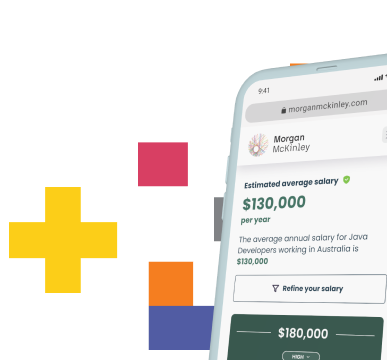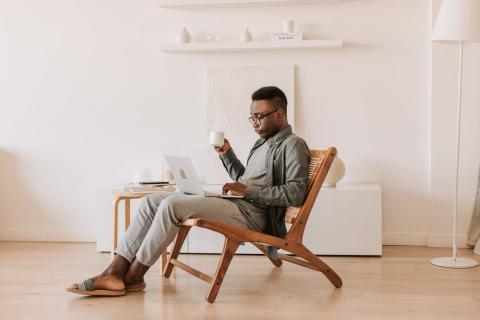In UX, your Portfolio is your Resume!

If you are a traveler, you'd never forget your passport! So as a designer, never forget about your portfolio!
I was lucky enough to be given the freedom by our two MD’s in Toronto to explore my passion for design and move into my own verticle of UI/UX and Product Design with Morgan McKinley. I was also lucky enough to meet some incredible candidates and clients in this space who I learned so much from. My candidates and clients provided me with so many insightful tips and tricks in my new verticle but it was clear from the onset that the importance of a candidates portfolio can never be underestimated!
For anyone new to UX, a portfolio is in many ways a UX designers most important asset. It is a showcase of their best work, and while commonly seen in the design and creative industry, everyone should have one. A good portfolio will help designers get an interview for a job and just as importantly will help designers stay focused on their career.
Nicole Harrington, UX author, cleverly evokes the importance of portfolio’s in her simple but effective metaphor when she compares a portfolio to a designer being as important as a passport to a traveler when she says “applying for a UX job without a portfolio is like trying to board a plane without bringing your passport”.
Similarly, Aron Visuals, UX Author, talks about the importance of designers having an up to date portfolio. He believes that passive UX designers will always have an outdated portfolio and this will show to recruiters. He talks about how a designers portfolio will play an important role in making sure a designers stays relevant in their UX career, months and even years after they’ve gotten their job. He advises designers to always keep an up to date portfolio because “portfolio’s can act like a compass, to point you in the right direction in your UX career.”
A recent survey conducted by German UX designer Tobias Van Schneider found that of the 1,026 people who responded, 68% of people said they keep their portfolio online while they have a job, but don’t update it. Of the remaining 32%, 11% said they take their portfolio offline completely and only 21% said they actively keep it updated. Meaning, 80% of people completely neglect their portfolio when they have a full-time job.
These figures were really interesting and I recently spoke to one of my UX candidates, Kevin Chinbuah, about these findings and also asked him what advice he would give to designers building their portfolios. Kevin is a real up and coming UX Designer in Toronto. See Kevin’s thoughts below on building a portfolio and the importance of keeping it up to date!
Advice to designers when building their portfolio?
Find a way to show your personality in your portfolio. This can be hard to do, but a great way to differentiate yourself from everyone else. It may be by your use of colors, your approach to your content writing, or showcasing your hobbies in an interesting way.
As you start your career and begin to build a good stock of projects, be very reflective and assess what industries you enjoyed working in, or what projects excited you and why. As you learn more about yourself, you can tailor your portfolio to reflect the type of work you would like to do more of. Figure out the purpose of your portfolio for you. For me, it is my chance to refresh my knowledge of code and experiment with creating different kinds of experiences. The redesign and rebuilding of my portfolio is my canvas to experiment with ideas and things that inspire me. I try to bring these ideas together to create an interesting experience, while still showcasing my ability to think and problem solve as a designer. I found that having a defined purpose for my portfolio, outside of it being a collection of past projects, has made the process of redesigning more enjoyable, because it brings forth new challenges to
overcome.
How important is it to keep an updated portfolio?
Updating your portfolio, especially when you give it a full redesign is a great way to track your growth as a designer. In the year(s) between each redesign, especially for those just starting their careers, your understanding of what design is and the impact you want to have through design changes. Throughout your career, you will learn more about how to achieve great design, you will have perspective-changing conversations with those more experienced than you, you will make mistakes and learn from them, and all of these aspects will change your view of design. Updating your portfolio, then becomes an opportunity to have it reflect your current understanding of design and highlight the areas you may want to gain a deeper understanding of.
Lastly, for designers that like to improve their coding knowledge and skills, redesigning and developing your portfolio is a good project that will allow you to apply the knowledge you have learned. For example, let's say your portfolio was not very accessible the first time you built it. In the next iteration, learning how to build it to web accessibility standards is a great way to improve your skill and understanding of those best practices.
Any other advice to designers?
“We are constrained on all our projects, so on your portfolio don't be afraid to go crazy with it and scale back later. “ - My Mentor
For those designers that like to code, it is a great way to make sure you are using that skill. So experiment, have fun with it, try a new approach to your portfolio, and don't be afraid to pair up with a developer to teach you how to implement the ideas you have in your head.














